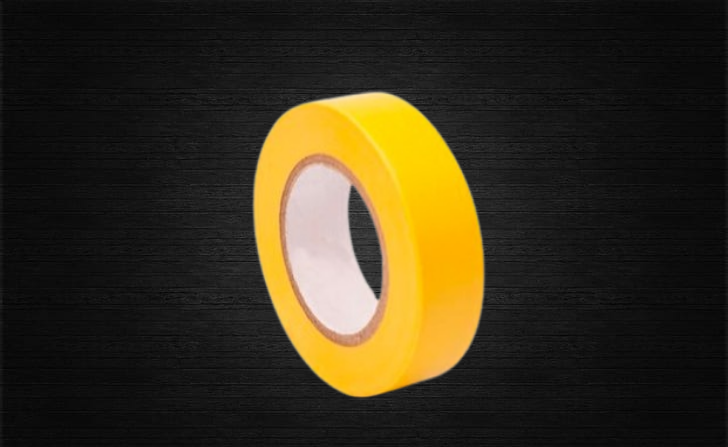This is a debate, not an argument, let’s be adults about this. [Insert political joke]
UK are safest, EU are both practical and almost as safe (as it supports a variety of plugs, both with and without grounding), and US is complete and utter garbage built for garbage voltage. Plus, the US one looks scared.
Plus, the US one looks scared.
Even our outlets are terrified of how bad the plug design is.
Try going to Japan. They took the US design, but most outlets there don’t have the grounding plug (in hotels it was practically non-existent). My travel adapter didn’t even work xP
It’s goes far beyond grounding, half of Japan use 50hz and half use 60hz.
It’s the same in The Philippines. One place I stayed had a three-way splitter & I snuck my laptop charger in the top, just letting the ground hang out. Luckily my gears has gotten lighter & with GaN chargers, two-prong is just fine.
UK are safest
Until you step on a plug…
You thought Lego was bad on bare feet? Hoo boy
At least the UK one is blunt. I’m trying, without success, to find a picture of the old style telephone (and my modem) connectors we had here in Norway. Imagine the UK power plug, but the pins are pointy. I’ve drawn blood stepping on these. I would run a marathon on Lego to avoid stepping on one of those again. Luckily they were gradually replaced by wallmounted RJ11 (or RJ45 if you had ISDN) during the 90’s.
EDIT: Found it.
Stepping on one feels like getting shanked under your foot by Poseidon and his trident.
Oh dude that’s medieval lol
Holy shit that’s just sadistic!!
The ’90s was also the era of Mortal Kombat, so at least it makes sense in its historical context
is that PoE adapter
No, it’s just an adapter to get the rj11 to connect to the wall socket that most houses built before 1990 had for their phones here.
I’ve seen plenty UK plugs where the ground plug has a weird wedge shape to it.
Like a bored knife designed was angry they’re designing plugs now…
Plugs are for beginners. I once managd to step on a Motorola 68020 processor which embedded its pins intomy foot and drew blood.
Makes your house very safe from burglars!
The UK ones are only safe from an electric point of view. As stepping hazards for shoe-less feet they are only slightly less lethal than Lego bricks
UK’s are hilariously over-engineered. Might as well have a puzzle mechanism on the back, to make sure you really meant to power that toaster.
Breakers in every socket are a neat idea, though. And power switches at the socket make a lot more sense than US homes where some wall switches control some sockets, somewhere. Good luck!
And AUS doesn’t exist!
I’ve seen an Australian guy bend an American plug enough so that it fits into his outlet. Let’s just say that
his house burned downhis studio lights started flickering.
The Brits have undoubtedly the best outlets from a safety perspective, despite their size. North American outlets are garbage by basically all measures. European plugs are weirdly round, but very functional.
My two (€/100)s
I’ll just throw in one good thing for US outlets. The option of GFCI (Ground Fault Circuit Interrupter) outlets. I think it is required in bathrooms (or elsewhere 6 feet from water source), but you can probably install those anywhere you wish. It cuts off the power during a ground fault, which means that some current (more than regular leakage) is flowing to ground, perhaps through a human. It should cut off at just 5mA.
There’s something similar in Europe, called RCD (Residual Current Device). It is the same thing, it’s just that in US it’s generally called GFCI and RCD in Europe. The difference with RCD is that it’s not in the outlets, but the breaker box, and generally protects the whole home. But you can also wire GFCI to multiple outlets. The problem is, that trip ground fault current for RCD can be up to 30mA as opposed to GFCI’s 5mA. And with 10mA and above, you may not be able to “let go” of the item shocking you, which isn’t nice even if it won’t yet kill you (probably).
Why is that? Leakage current. That could very well exceed 5mA when you have stuff like a desktop PC, fridge and other stuff connected, resulting in unwanted tripping while everything functions just fine. It also means that perhaps, one day, your fridge may save you by preloading the RCD as it wouldn’t trip without it.OK, now something negative about (some) EU plugs.

Type C:
This should only work for devices that don’t require ground due to pin thickness. But you can still get it to make a terrible contact and hold it in. But perhaps you could even force it into some. I dislike this.
Type F:
Oh well. You can probably still force in older plugs that require ground pin yet don’t have the contacts for type F sockets like modern plugs. It is also reversible which I hate. Sockets should be polarized. You shouldn’t be allowed to just plug in the device other way around. If there is a switch, it definitely should disconnect live wire, not neutral leaving the device live but not functional. That’s unsafe. I hate this.
Type E:
This is nice. I like it. It would also be cool if there was a fuse inside the plugs cough cough UK plugs.
Re: GFCI’s
At least in my country, GFCI’s are required to be fitted in the fuse box, to protect the entire building. Not just rooms which are prone to ground faults. In the American type, the protection is optional.
Regarding Type F:
If you have a monopolar switch in your appliance, you dun fucked up real bad.
Reason is here in Belgium (and a bit of France apparently) and especially around Brussels, it’s very common for houses to be wired with two phases (+115/-115V). This was done post-war for copper-saving reasons, and we call this 3x230V. So any device that cuts the brown wire only will still have 115VAC to ground, which is obviously unsafe.
Also more generally there is no guarantee that the live wire is on either side. From what I understand each electrician has their preference, and as long as the wiring is consistent then it’s up to code.
So wherever there is an outlet, nothing can be safely assumed by the appliance besides that the total voltage is around 230V AC. Even assuming that there is a ground is incorrect due to old houses still having Type C (which incidentally means that even Type E also is not polarized when plugged into a Type C receptacle!).
There are appliances with only live wire switch? If that is the case it’s horrible design, should always cut live and neutral for European reversible plugs
In Italy we have our own version of the type F, the Schuko Bipasso and it’s so fucking convenient. (number 2)
It’s convenient when plugging in shukos or europlugs, but when plugging in Italian plugs they wiggle so much, as the pin holes are much wider then required, and the pins aren’t angled like on europlugs
You can get RCD sockets if you want in the UK (and mainland Europe too). But we generally at the minimum have sockets protected by an RCD (which is the same thing) and in more modern installations all circuits are protected by one.
In my country the differential switch is mandatory, every circuit must be protected, be it from a main one or separate ones for each circuit. I’d be surprised if it weren’t the same all over the EU.
For new installations in the UK that’s true. But my house, for example was wired in the 1990s and has an RCD only on the sockets (the reasoning I think was that an old style incandescent bulb failing might trip the single RCD taking out the whole house power, but could be wrong).
Since the early 2000’s they changed it for new installs to be RCD for all circuits I believe.
Sure, but as far as I could find, even those have trip rating of 30mA. But perhaps I could find some with lower rating.
I think 30ma is about normal. There’s a good reason, in an average socket ring (or even radial) you will always get SOME leakage. So there’s always going to be a common sense allowance made depending on whether it’s a single socket, a small radial or one or more rings.
Yes, and 30mA, even at mains voltage, will not kill someone. Static shocks can vary from 1,000V to 500,000V and are usually around 5mA for reference.
Regarding RCD, where I live they’re allowed to be 30mA for wires that do not include outlets, but if an outlet is connected to the switch, the switch must cut off at 3mA…
Regarding the outlets, the type C is old, I haven’t seen those installed or sold since at least the early nineties (probably even earlier). I don’t understand why it being reversible is bad. I think switches can just cut of both wires, and you’re left with the ability to plug it in any way you like. I don’t really know whether the switches actually do that or not (or, if they’re required to do that). Can this be tested somehow?
I’m biased, from the UK. But it’s pretty much the order I’d do it too. UK first, the round Europe ones only very slightly behind (maybe even on par, I have just a slight issue with the fact that polarity isn’t assured).
With single phase AC there is no polarity, when you plug something in you don’t need to know which plug is live, it will work either way.
It will work either way, there is no polarity when a circuit is made.
There is polarity before a circuit is made. One wire is live, one wire is a neutral return.
For a basic heater, plugged in one way will have the heating element always live, and the other way it will only be live when it is switched on and a circuit is made.
One is definitely safer than the other.
Almost all devices that switch mains power, have both the live and neutral connected to the switch.
Almost…
One wire is live in that it moves between —x and +x volts in a sine wave. The neutral is often connected to earth/ground somewhere upstream and should be 0v. So if you just pop that power into a transformer and then regulate and only use the DC then it’s completely irrelevant which way you plug it in.
However there’s plenty of cheaper ways to get a lower voltage, or to power a device from mains power that when done badly can reference what is thought to be neutral (and this ground) but could easily become live and make something metallic become live either without fault, or with fault to a minor component.
My biggest beef with the NA outlets is that they wear out fast, causing plugs to not hold securely. Plugs with round prongs secure a lot better in their socket. Outlets with a shaped/ recessed (non-flat) faceplate also do a much better job at keeping the plug in.

I’ve tried to plug my cords into the Communist outlet types but none of them fit. That’s how I know the American outlets are the best.
The main thing that should get adopted everywhere is having fuses or breakers in the plugs themselves. That would eliminate a lot of fires caused by putting too much current through small wires.
I also like the outlets (like in the UK and probably other places) that won’t unlock the mains slots until there’s a ground pin in place.
Fuses should be required for any power strip that is not rated for 20 A (2.5mm² wires). At least where I live that’s the highest current an outlet circuit can be rated for.
The power strips that cheap out and only put in 1.55mm²/16 A are stupid. For 20 A power strips though, fuses are redundant.Modern European plugs are already plenty safe for “accidental” insertion, you have to push into both holes at the same time for the outlet to “unlatch”.
I also like the outlets (like in the UK and probably other places) that won’t unlock the mains slots until there’s a ground pin in place.
That’s… most places. Or better, they don’t open unless you push in both prongs at the same time
I don’t care for the one that require both mains pins go in at the same time. That’s what we have most in my area and they are not as smooth as the long ground pin unlocks.
Yeah that’s what I was about to say, that’s… most plugs. Except the really bad ones. Maybe OP is american. 😅 In which case, my condolensces, that plug design is positively cruel.
Want to say that we do have tamper resistant plugs now. They require both pins to go in at the same time.
That would eliminate a lot of fires caused by putting too much current through small wires.
The counterpoint to this would be: Why have the fuse in the plug (where the plug necessarily becomes bulkier and hence easier to break or harm someone by stepping on it, especially because the UK plug design means the points orient upwards on average) when you can have it in the device instead?
Moreover, why go the step of putting millions and millions of fuses into millions of millions of plugs instead of much fewer fuses on lines in homes? If you got to decree a fuse to stop overcurrent on the cable in the wall, put the fuse where you’re trying to use it.
(I’m not against fuses in all plugs, I’m just saying it’s easy to make counterarguments that it’s both impractical and also the wrong solution to the problem)
The benefit of the fusebin the plug is you can have a 1A fuse for a 1A appliance with a cable rated for 1A, and plug it into a socket rated for 10A.
If the appliance faults, then the wire doesnt catch fire.
If you dont have that, then all the wires have to be rated to 10A (or whatever the rating is).
And thats based on 1-breaker-per-socket.If you have 2 sockets close to eachother on the opposite side of the house than the breaker panel, its easier and cheaper to wire them both together on 20A cable and a single 20A breaker. The fuses in the plug protect the 10A cable to the appliance, the 20A breaker protects the 20A cable in the wall.
Yes, you could put a fuse in the appliance (a lot have this).
But that isnt convenient for lamps, where it might be bulky to include a fuse holder and ruin the aesthetic.
Or something that deals with water, like submersible pumps or kettles.
Also, some appliances have swappable cables (IEC C13 for example). So if the appliance has an internal 10A fuse but is used with an IEC cable rated to 5A then it leaves the cable unprotected and a possible fire hazard.The plug is also a good place to put it regulatory speaking as it means no manufacturers needs to change device designs, they just need to buy different cords. And it does not mean the plug has to be huge the way it once did. Most people in the US don’t even notice that there are fuses in the christmas light plugs. And I had a desk heater once that used an automotive fuse; it mean most of the plug was fuse but it was still built into ano therwise standard NEMA 1-15 plug.
How does that work for devices you don’t necessarily want ground pins on? eg: toasters
Why would you not want a toaster to be earthed? I can think of loads of devices that would apply to but toasters contain a lot of metal and frequently have metal casings.
You can also always have an earth pin, like type G plugs and sockets, even if it isn’t wired up and is made of plastic.
If the toaster has a metal chassis, you DEFINITELY want that earthed, since any failure where the element or live hits the chassis will instantly trip the RCD/Ground protection whatever you guys call it. But, for devices that really don’t need a proper earth, we just put a plastic earth pin connected to nothing in the plug.
a plastic earth pin like this
https://en.wikipedia.org/wiki/Schuko

I’ve used many plugs and in my opinion, the schuko plug is the one that makes the most sense.
-
Reverse Polarity (can’t use it the wrong way, and you can turn it in case some power adapted is in the way)
-
also the symmetry makes it look more pleasing
-
only 2 pins stick out (the ground is in the body, 2 pins are a reduced area of failure in case you drop it.
-
very good and secure fit
This is my favorite too!
also it looks like a cartoon plug which is fun. However, the minified version that companies make to go in these plugs is truly awful
And as every child here knows, you can just plug it into a pig nose for mobile power. No need for noisy generators, just bring your pig.
-
I am going to argue Swiss type J.
It’s compact, safe, and easy to use.
Before anyone says UK I’m going to say they’re too bulky to be worth it. A usb charger for a UK plug is just so big and bulky that it’s not worth it. The Schuko plug falls into the same category.
If we are allowing future potential plugs I would argue for IEC 60906-1. It’s basically the same as Swiss type J but with very minor changes.
Swiss is interesting. It lacks some of the inherent safety of the SchuKo style, but it’s also far more compact, while keeping most safety features. I guess it’s a good compromise, which is often the crown achievement in engineering anyways.
I definitely agree about the UK plug. I don’t know how to describe it, but it looks like a caricature of what a plug is supposed to look like.
deleted by creator
can we make a new thing? ie, i love what weve been able to do with USB-c as far as standardization… could we make a higher voltage, single plug ‘thing’?
We could but the amount of time that would take would be ludicrous, and that’s if you can convince people to switch. People don’t like change.
Hell, the switch to USB-C isn’t even fully complete. Sure, Apple finally did it after the EU twisted their arm, but some companies still release products with micro USB. Idk if it’s cheaper or what, but it’s definitely annoying.
i think the micro to usb-c is about supply chain. current production needs to run out the supply of the cheaper micro pieces. at some point it will be cheaper to use usb-c than micro and we wont look back.
I like change. When it comes to electrical sockets anyway. And I am definitely a singular human person and not a hive in a skin suit.
My uninformed take on this is that its almost impossible because countries have different power standards. Of course i may be entirely wrong, or correct but with an entirely incorrect reasoning. Please people who actually know correct me below
We could make low voltage DC wiring a thing inside homes.
The main problems is high amperage required to get the same wattage and the difficulty to change voltage with dc; coming from someone that has a small workshop running out of 12v dc from solar panels and batteries
It depends on what you’re running, but I used to work for a low voltage lighting company. We did mostly 24vdc.
PoE works really well, data and power over a single ethernet cable for various low voltage devices. I have PoE powering network switches, WiFi access points, doorbells, cameras and raspberry pis.
For low power, sure, but refrigerators and lighting are going to require thicker cabling. But you could reuse 14/2 romex for 24 volts and get like 10-20 amps, depending on the distance.
Unfortunately, you can’t always trust line voltage wiring to make sense. Sometimes they tie neutrals together across circuits, sometimes they reverse the colors of the wires, and sometimes the electrician just didn’t give a fuck about excess wire and there’s like 50 extra feet of looping cable for no reason.
What I’d rather see is a standardization of PD installed in houses. That is, as part of the electrical installation a high capacity PD power supply is installed, and USB C sockets available on all power sockets. It would be more efficient to do a one-off central supply.
The problem is, that PD supports many voltages, so there’d need to be some way to dynamically generate those.
But, a good DC house supply would be a good thing and easier to provide some kind of battery backup for.
i started swapping out outlets with a dual usb-c model. quite bulky, and from the sounds of it not very efficient
Yeah, there’a many in socket options. Sometimes they’re too big for standard recesses too. I’m thinking more of a central solution.
If you don’t feel pain when stepping on Legos for whatever reason, the UK plug is easily the best one.
deleted by creator
If you’re balancing basic safety against cost, you may work for Boeing.
deleted by creator
I just wanted to throw the AU/NZ plug into the mix since nobody is really talking about it. I don’t have enough knowledge about this kind of thing to really have a take on it, but I’m interested to get an international perspective.
Ghostface!
I don’t know why I never made that association before, but now I can’t unsee it.
It gets better with the switches as they look like a high ghost

For some strange reason that’s used in Argentina also. Not sure why here the ground is the same length than the others, though.
Pros:
- not as big as the UK plug
- not an American plug
- those power cords that stick out at a diagonal parallel to the wall
Cons:
- no inbuilt fuses
- no inbuilt guard on the socket
- every plug and socket feels cheap.
- thin shitty pins that bend easily
- shitty sockets that break when shitty bent pins get plugged into them.
- used by a handful of people with tight regulations … and China. Good luck getting decent affordable, certified, smarthome sockets.
- that cunt who invented the vertically oriented twin socket wall unit. What a fuckhead.
- those power cords that stick out perpendicular to the wall.
I just mentioned NZ/AUS plus, probably as you were typing ;)
Hah. Yeah, I definitely prefer the size over UK plugs. It feels wrong to me to have a 230v wall voltage without a blanket requirement for earthing, but as I said, I don’t know enough about it. I’m quite open to being wrong about that.
having gotten zapped by 120VAC and 230VAC I totally agree. the former sucks and is no fun while the latter made me question my life choices
It’s better than the US one, but it’s just worse compared to the European ones. It’s hard to get them aligned in the dark/behind furniture, but at least it won’t fall out by itself.
Hey did you get that idea from the coffee shop thread? Someone was asking about weird outlets shown in a picture.
My answer for the question is obviously the UK standard.
My answer for the question is obviously the UK standard.
Also knows as the caltrop plug because it the damn things always fall spikes up and hurt whoever is trying to move through a room in dim light.
The correct answer is of course SchuKo plugs / CEE 7/7. If you check plugs used in the world you notice it has a huge spread of compatible plugs, as it can fit SchuKo plugs of two types and Euro plugs of two types. It also has all security features, including a raised ground that connects the ground before the power can come into contact.
It’s tough to truly pull favourites with power sockets - you just use what you got - but if I had to pick one that’ll be decreed to be used worldwide, it’d be this one. For sure. Note how the 7/7 variant has a lot of interoperability with other existing plug variations, too. It can for example use the french outlet-ground-pin, not only the german-style clamps, all with the same plug. Outlets can be designed to be compatible with swiss plugs, IIRC. Danish ones I’m not sure about, though.
Schuko and CEE pull out when pulled straight, and are annoying as fuck with vacuums and power tools so UK one beats them
Grounded danish plugs don’t fit Schuko sockets, but Schuko plugs fit danish sockets (but aren’t grounded).
This leads to a staggering amount of ungrounded devices in Denmark, as most are imported and making a variant for such a tiny country isn’t profitable.
Fun fact: the danish power plug was created by Lauritz Knudsen, a Danish company who had a monopoly. They are the reason Denmark uses this plug as the only country in the world, and Schuko only became legal to install in houses quite recently, so 99% of houses still use their standard.
LK has since been bought out by Schneider Electric but we are still stuck with our special plug and most imported devices are still ungrounded.
Thanks for listening to my Ted Talk.
IEC C13 socket with C14 locking plugs. Already ubiquitous in data center facilities. Rated for voltages between 110 and 250, so it works for any country’s common household current.
Oh yeah, and it’s been used since forever. IIRC there are Commodore 64 components with the same power cord as a modern-ass PC PSU.
I’d go UK then NZ/AUS (Type I plugs). I may put our NZ/AUS ones above the UK ones on the size difference. and of cause they should all have RCD protection
The plugs used in the Netherlands, too lazy to look up what type it is.
They’re well built, have snug fits, have metal only at the ends to avoid accidents, and I can go on for a while
The worst ones are the US ones that are also used in Canada and Mexico.
They. Suck… Badly…
I’ve electrocuted myself on many instances whilst trying to plug something in the dark. They connect with so little focrce that half the time plugs just slip out of the socket because of gravity. Its a shit show
Getting shocked by 120v is a rite of passage as a child growing up in the US
deleted by creator
I’m always up for a bit of controversy. I like the basic ungrounded American plug (NEMA 1-15).
It has no safety features. Just about every American has shocked themselves with it once, but very few have done it twice. I like it because it’s compact, and that leads to some conveniences:
- It works great in folding designs for portable power supplies. I’ve seen folding implementations of Europlug and even British plugs, but they’re not as compact.
- It works great for ultra-compact splitters and many-outlet power strips. Yes, you can be dumb and overload these, but we have a whole lot of low-power electronics in the modern world such that it’s not hard to have a dozen devices each pulling less than an Amp. Multi-port USB power supplies are starting to mitigate this a bit.
- It doesn’t have shutters (by default), so it’s easy to plug things in. Every plug type I’ve encountered with shutters takes a lot of force and sometimes binds.
“Just about every American has shocked themselves with it once”
Um, no.
You haven’t? I guess most people I know were dumber as kids that you were.
Are you saying they shocked themselves plugging something in? Or putting something else into the outlet.
The plug itself is not really easy to shock yourself on, you’d have to intentionally try to do it by putting something behind it to bridge the pins, or have a broken plug or something, so that’s why I am saying this seems incorrect.
I definitely knew some dumbasses that would attempt to creat a power arc, but they were certainly not the majority.
It’s possible to touch the pins with your finger when the plug is partially inserted into the socket. It’s especially possible with child-size fingers.
Many of the other plug designs, like Europlug have half-insulated pins to prevent this.
Possible, sure. Easy? Not really.
Give it time.
There’s a problem, though. You can get shocked by the US voltage and be fine. But try that with the European 50 Hz 240 V…
But try that with the European 50 Hz 240 V
I have. It hurts more.
It’s probably somewhat more dangerous than 110V if the circuit goes from one hand, through the chest, into the other hand. Most shocks involving a plug just go through a finger.
Knew a guy in college who had his thumb nail blown off from plugging a cord in while touching the terminals. Was gross.
Just about every American has shocked themselves with it once
Americans I’ve met are smarter than that.
























